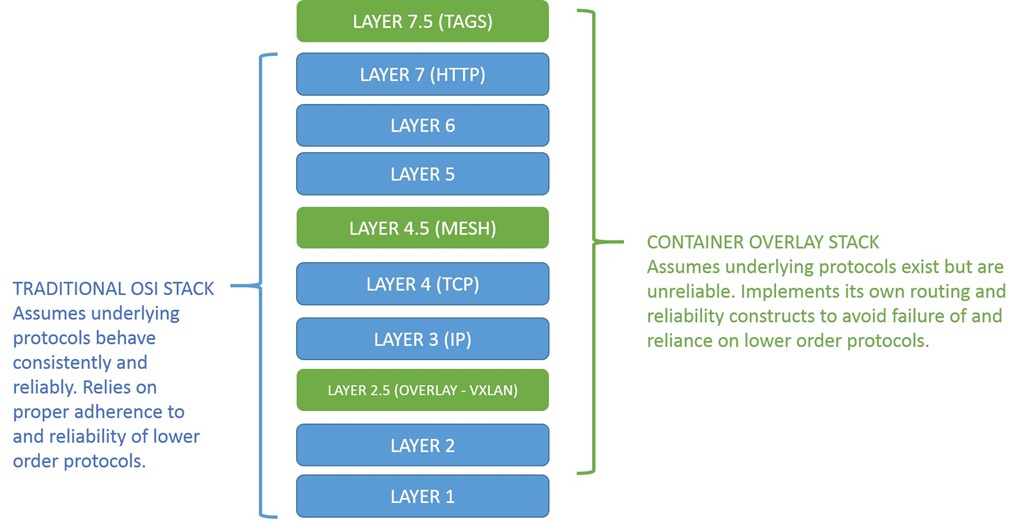CHAOS ENGINEERING
with
SERVICE MESH
Julien Bisconti
Software Engineer / SRE

slides: bisconti.cloud
contact: g.dev/julien

Outline
- Genesis
- Kunernetes networking model
- Service mesh: architecture and features
- Demo of Istio
- Chaos Engineering: concepts & origin
- Demo of fault-injection
- Q&A
Questions to the audience
- Who uses containers ?
- Who uses an orchestrator such as kubernetes ?
- Who knows what is a service mesh ?
- Who knows what is a SLI, SLO, SLA ?
- Who knows what is Chaos Engineering ?
- Who already did Chaos Engineering ?
Service Mesh
8 fallacies of distributed computing
- The network is reliable.
- Latency is zero.
- Bandwidth is infinite.
- The network is secure.
- Topology doesn't change.
- There is one administrator.
- Transport cost is zero.
- The network is homogeneous.
source (wikipedia)
RFC 1925 ( 12 Networking Truths )
using a library, framework or service for:
- circuit breaking
- timeouts
- retries
- service discovery
- client-side loadbalancing
- metrics
- traffic shaping
- rate limiting
- ...
for which languages?
drawbacks
- combination language/framework/version/feature
- maintain, upgrade, migrate, retire
- code pollution and complexity (+ testing)
- deployment / rolling update
- language/framework/version lock-in
- debugging
➡️ ️ move it to the infrastructure
Kubernetes networking model
1. all containers → all other containers without NAT
2.
all nodes → all containers
all nodes ← all containers
without NAT
3. the IP that a container sees itself as
is the SAME
IP that others see it as
VIDEO: Kubernetes Deconstructed (1h)
What is a service mesh
What problems does it solve
Communication between services
A network for services, not bytes
How does it solve inter service communication

 source
sourceWhat's in the code
details = {
"name" : "http://details:9080",
"endpoint" : "details",
"children" : []
}
ratings = {
"name" : "http://ratings:9080",
"endpoint" : "ratings",
"children" : []
}
Traffic Management
apiVersion: networking.istio.io/v1alpha3
kind: VirtualService
metadata:
name: reviews
...
spec:
hosts:
- reviews
http:
- match:
- headers:
end-user:
exact: jason
route:
- destination:
host: reviews
subset: v2
- route:
- destination:
host: reviews
subset: v1
Resiliency
apiVersion: networking.istio.io/v1alpha3
kind: VirtualService
metadata:
name: reviews
spec:
hosts:
- reviews
http:
- route:
- destination:
host: reviews
subset: v2
retries:
attempts: 3
perTryTimeout: 2s
Security
- namespace-level and service-level policies
- mutual TLS Authentication
- role-based access control (RBAC)
Observability
- Metrics (prometheus)
- Logs (fluentd)
- Tracing (jaeger)
- Cluster traffic (kiali)
DEMO

QUESTIONS
about service mesh
CHAOS ENGINEERING
Chaos Engineering is the discipline of experimenting on a distributed system in order to build confidence in the system’s capability to withstand turbulent conditions in production.
— principlesofchaos.org
Thoughtful, planned experiments designed to reveal the weakness in our systems.
— Kolton Andrus (cofounder and CEO of Gremlin Inc.)

Chaos Engineering isn't done to cause problems; it is done to reveal them.
— Nora Jones (Netflix)
Chaos Engineering is exploratory testing of non-functional requirements where ‘non-functional requirements’ are the requirements that if not met render a service non-functional.
— @littleidea
Having a child: Chaos Engineering for everything in your life.
— @icecrime
Usually untested
- Graceful shutdown
- Health check
- Cascading timeouts
- Deployments (smoke test)
Type of errors
- Unreachable
- Delays
- Timeout cascading
- Circuit breaker
Word of caution
"Chaos": sounds cool and fun for you.
"Resiliency": sounds great for your manager and the system.
Results of Chaos Engineering = resiliency
Article: Would a Chaos by any other Name
How to start Chaos Engineering
- Don't mention "Chaos" yet - talk about goals
- Set up monitoring !!!
- Identify a measurable output for "steady state"
- Form a hypothesis
- Simulate real-world events
- Disprove your hypothesis
- Write a report with findings and mesurements
- Talk about the "Chaos" experiment
- Practice and improve
Site Reliability Engineering
- Identify weaknesses
- Improve resiliency
- SLI, SLO, SLA
DEMO

Resources
- What's a service mesh
- SRE book
- SLI, SLO, SLA
- [Talk] Lyft's envoy
- Istio Networking Api explained (Video)
- Gremlin Blog
- Chaos Engineering Cheat sheet
- [Talk] Chaos Engineering: Why the World Needs More Resilient Systems
- Chaos Engineering Book
- Chaos Engineering: the history, principles, and practice
- ⭐️ Awesome Chaos Engineering
- [Talk] Choose Your Own Adventure: Chaos Engineering
- Would a Chaos by any other Name
THANK YOU
and I'm sorry 🙏
If you had to maintain my code
I hope you learned more by maintaining it
than me by writing it
Slides made with Reveal.js and hugo-reveal